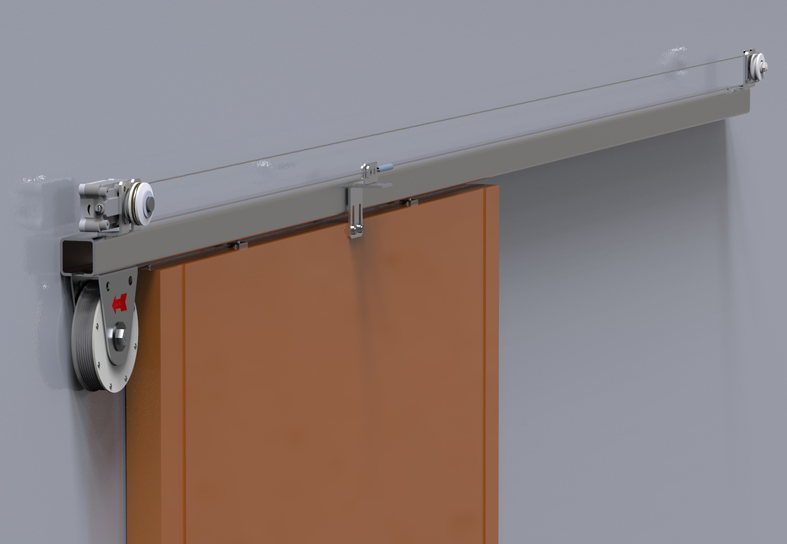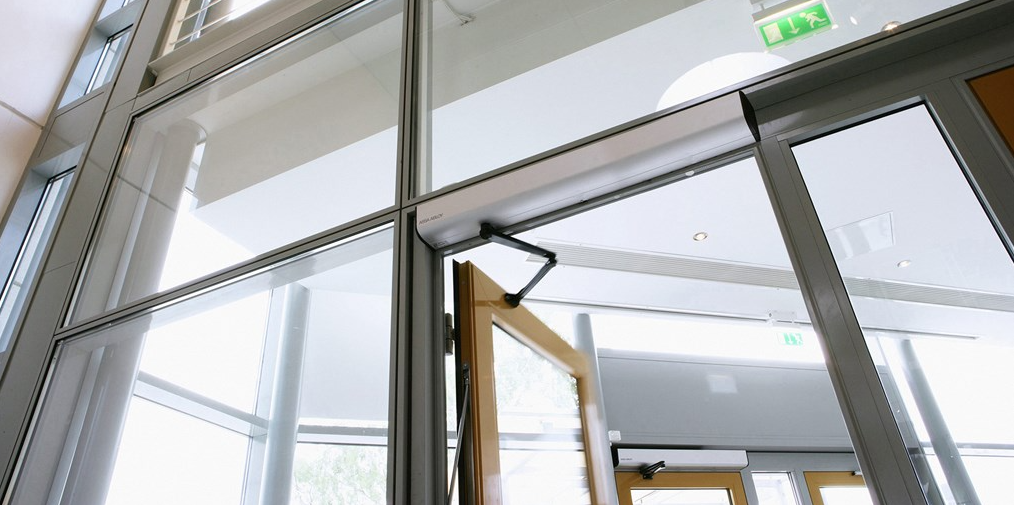Automatic doors typically rely on electrical power but can switch to backup batteries or manual operation during power outages.
How Automatic Doors Work
Sensors and Mechanisms
Automatic doors operate using a combination of sensors and mechanical systems. The sensors, often infrared or motion detectors, pick up movement or presence near the door. Once the sensor detects someone approaching, it triggers the door to open.

Different types of sensors include:
Motion Sensors: These detect movement and are commonly used in shopping malls and airports.
Infrared Sensors: These use infrared light to detect heat and are often used in hospitals where more sensitive detection is required.
Capacitive Sensors: Rarely used but effective in detecting electrical fields, such as a human body approaching.
The mechanical systems then actuate the doors, either sliding them open or swinging them apart. The most commonly used mechanisms include electric motors coupled with a series of belts or hydraulic systems.
Role of Electrical Power
Electricity is the backbone of an automatic door system. The sensors and the mechanical systems both need electrical power to function. The sensors require a continuous power supply to keep scanning for movement or presence. Once they pick up a signal, the electric motors kick into gear, using more power to physically open or close the door.
Different power needs depending on the type of door:
Sliding Doors: Generally require a steady, but low, electrical current to keep the sensors active and a higher current to move the doors.
Swing Doors: Often need a more substantial amount of power to overcome the inertia of a stationary door.
Revolving Doors: These usually need a constant level of power to keep revolving at a steady pace and may require a burst of power if they have to open faster in emergencies.
Power Failure Scenarios
Emergency Power Sources
In the event of a power failure, automatic doors usually switch to emergency power sources. These sources include backup generators and battery packs. Backup generators kick in within seconds of a power outage, supplying the needed electrical power to the door’s system. Battery packs, on the other hand, offer a more limited timeframe, ranging from a few minutes to a few hours depending on the capacity.
Types of Emergency Power Sources:
Backup Generators: These are often diesel-powered and can supply power for an extended period.
Battery Packs: Usually integrated into the door’s control system and offer short-term power.
To know more about backup power systems, you can read the Wikipedia article on Uninterruptible Power Supply.
Manual Override Options
When electrical power fails, manual override options become crucial. Most automatic doors feature a manual override system, typically a switch or lever located near the door. Activating this system disengages the electric motor, allowing people to open or close the door manually.
Types of Manual Override Systems:
Mechanical Levers: Usually located on the side or top of the door frame.
Key Operated Switches: Require a specific key to switch the door to manual mode.
Safety Measures During Power Failure
Safety is a top priority during power outages. Signage often illuminates using phosphorescent materials, guiding people to emergency exits. Audio alarms may also trigger to alert people that they should use the door manually. In more advanced setups, mobile app notifications can inform building managers about the power failure and the status of the doors.
Safety Measures Include:
Phosphorescent Signage: To guide people in low-light conditions.
Audio Alarms: These kick in to alert people of the situation.
Mobile App Notifications: Inform building managers in real-time.
For additional safety guidelines during power failures, consider visiting Wikipedia’s page on Emergency Evacuation.
Battery-Operated Automatic Doors
How Long Do Batteries Last?
Battery-operated automatic doors are increasingly common, especially in settings where a constant electrical supply is not guaranteed. The lifespan of these batteries can vary significantly based on the type and frequency of use. Typically, a standard alkaline battery can last anywhere from 6 to 12 months under normal usage. However, lithium-ion batteries offer a more extended period, often exceeding a year.
Types of Batteries:
Alkaline Batteries: Usually cheaper but last for a shorter duration.
Lithium-Ion Batteries: More expensive but provide a longer lifespan and more consistent performance.
For more information on battery types and their lifespans, check out the Wikipedia page on Electric Batteries.
Pros and Cons
Battery-operated automatic doors have their set of advantages and drawbacks.
Pros
Flexibility: Easy to install and ideal for locations without a steady power supply.
Low Maintenance: Batteries are generally easy to replace.
Energy Efficient: Often designed to consume less power during operation.
Cons
Limited Lifespan: Batteries need to be replaced periodically, which can be both costly and time-consuming.
Performance Issues: Batteries can lose their charge over time, leading to slower door operation or failure to open/close properly.
You can weigh these pros and cons by consulting Wikipedia’s article on Automatic Doors which provides a detailed look at various types of door mechanisms.
Alternative Energy Sources
Solar-Powered Doors
Solar-powered automatic doors are gaining popularity as a sustainable alternative to traditional electrically powered systems. These doors use solar panels usually mounted on the roof or near the door frame to collect and store solar energy. This energy powers both the sensors and the mechanical systems, making the door entirely reliant on solar power during the day. At night, they can switch to a backup battery that has been charged through solar energy during daylight.
Types of Solar Panels Used:
Monocrystalline Panels: These offer high efficiency and are generally more expensive.
Polycrystalline Panels: Less efficient but also less expensive, suitable for locations with less intense sunlight.
To delve deeper into solar energy, you can visit the Wikipedia page on Solar Power.
Wind Energy Options
Though not as common as solar power, wind energy also provides a viable alternative for powering automatic doors, particularly in areas that experience strong and consistent wind currents. Wind turbines, installed near the building or on its roof, capture wind energy and convert it into electricity to power the doors. Since wind can be intermittent, these systems usually have a battery backup to store excess power.

Types of Wind Turbines:
Horizontal Axis Wind Turbines: More common and generally more efficient.
Vertical Axis Wind Turbines: Easier to install and maintain but generally less efficient.
What are the power requirements for different types of automatic doors?
- Sliding Doors: Usually require 120 volts AC.
- Swing Doors: Generally need 240 volts AC.
- Revolving Doors: Typically operate at 240 volts AC.
How much does it cost to install an automatic door?
- Sliding Doors: Around $3,000 to $5,000.
- Swing Doors: Approximately $2,000 to $4,000.
- Revolving Doors: Often upwards of $10,000.
What is the efficiency of solar-powered automatic doors?
What are the maintenance costs for automatic doors?
What are the dimensions of standard automatic doors?
- Sliding Doors: Usually 7 to 8 feet in height, 3 to 6 feet in width.
- Swing Doors: Generally 7 feet high and 3 feet wide.
What is the lifespan of the batteries used in battery-operated automatic doors?
- Alkaline Batteries: 6 to 12 months.
- Lithium-Ion Batteries: Over a year, up to 18 months.
What materials are commonly used in automatic doors for longevity?
- Aluminum Frames: Durable and lightweight.
- Tempered Glass: For safety and durability.
How fast do automatic doors open?
- Sliding Doors: 1 to 1.5 seconds.
- Swing Doors: 2 to 3 seconds.
